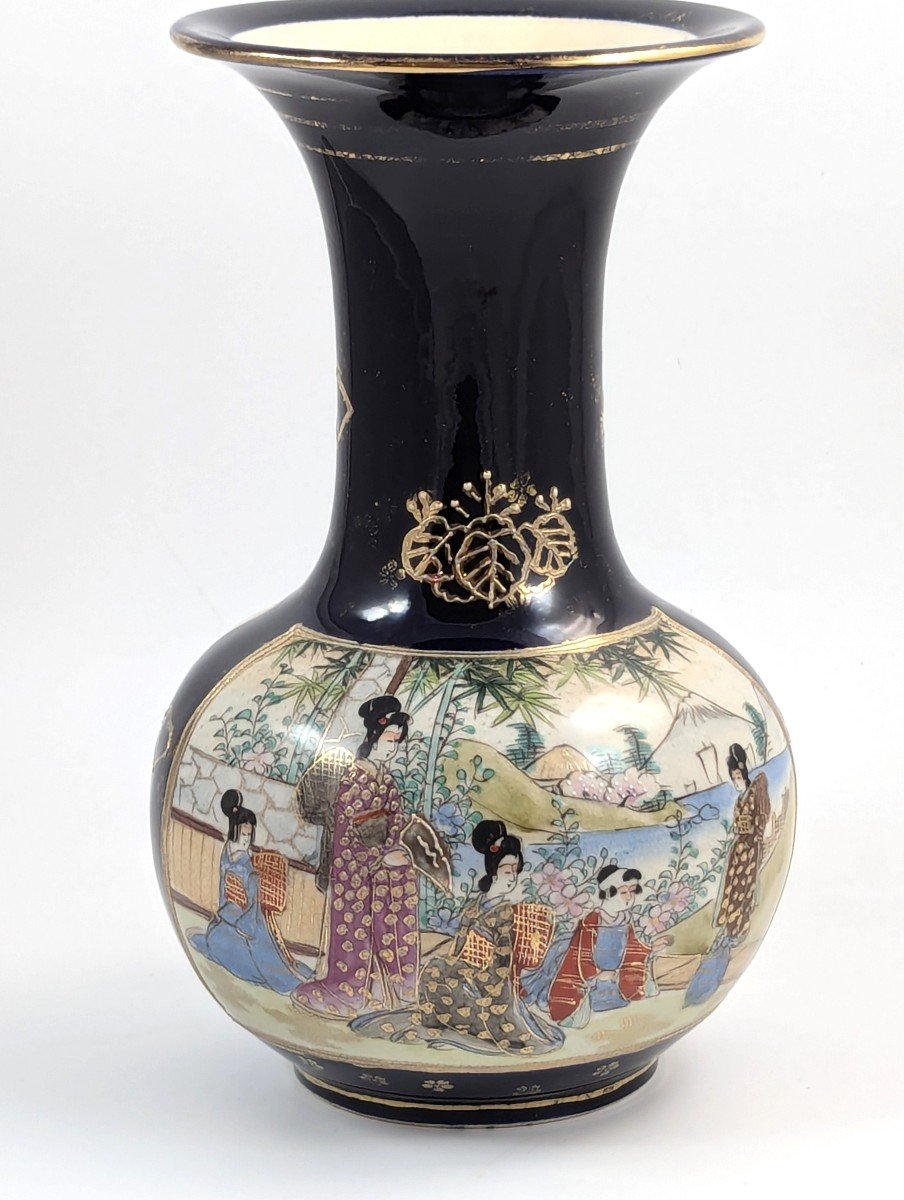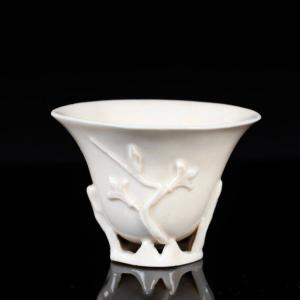"Antique Hand Painted Vase By Satsuma, Japan, Meiji Period "
This antique earthenware vase, likely from the Meiji period (late 19th century), is a perfect example of Satsuma craftsmanship. It features vibrant figural decorations, with one side depicting traditionally dressed Japanese women, while the other showcases a serene natural landscape with a view of Mount Fuji, a lake with sailing boats, and bamboo leaves. The delicate scenes are outlined in gold, giving the vase an elegant and refined appearance. Both the body and the neck are adorned with gold patterns layered over glazed enamel, which enhances the richness of the piece. The intricate detailing, such as the applied dot enamel on the kimonos and the gold-plated rim at the top and bottom, reflects the high-quality craftsmanship for which Satsuma ware is known. Satsuma ware originated in the Satsuma province of Japan, which is now Kagoshima Prefecture, and is distinguished by its elaborate designs and detailed imagery. The history of Satsuma pottery dates back to the late 16th century when the first kilns were established in the region. Initially, Satsuma ware was produced for local use with simple and utilitarian designs. However, under the patronage of the Shimazu family in the late 17th century, the style evolved into a more sophisticated art form. The potters began experimenting with new techniques, producing a wide range of items, including tea bowls, sake cups, vases, and figurines. During the Meiji period (1868-1912), Satsuma ware gained widespread popularity, both in Japan and internationally. The Meiji government actively promoted the export of Japanese goods, and Satsuma pottery was among the most sought-after products. Exported pieces were often lavishly decorated with gold and silver, featuring traditional Japanese motifs such as cherry blossoms, chrysanthemums, and natural landscapes. Today, Satsuma ware is still produced in Kagoshima and other parts of Japan. While traditional designs remain popular, modern Satsuma ceramics often incorporate contemporary themes and techniques, continuing the legacy of intricate designs and exquisite craftsmanship.
Dimensions: height 24.5 cm, top diameter 13 cm, bottom diameter 8.6 cm, diameter in wide part 15 cm, weight 871 grams.
Condition: minor loss of gilding. Otherwise excellent antique condition.
Please study the accompanying photographs carefully as they form an integral part of this description. The item will be shipped with full tracking and insurance. It is important to note that shipping costs include labour, packaging and postage.













































 Le Magazine de PROANTIC
Le Magazine de PROANTIC TRÉSORS Magazine
TRÉSORS Magazine Rivista Artiquariato
Rivista Artiquariato